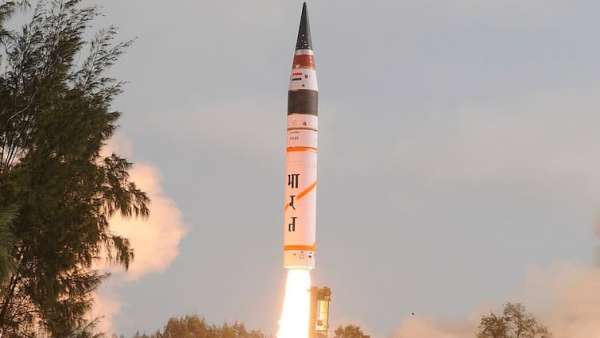
New Delhi, Jul 17 (PTI) India on Thursday successfully test-fired nuclear-capable short range ballistic missiles Prithvi-II and Agni-I from an integrated test range off the Odisha coast, demonstrating its strategic deterrence capability.
The test-firing of the missiles, conducted by the elite Strategic Forces Command, validated all operational and technical parameters, according to the defence ministry.
On Wednesday, India successfully test-fired indigenously developed Akash Prime missile in Ladakh that has been customised to operate at an altitude above 4,500 metres.
The test-firing of the missiles came over two months after the May 7-10 military conflict between India and Pakistan.
The Prithvi-II missile has a range of around 350 kms and it is capable of carrying a payload of up to 500 kgs. It can carry both conventional as well as nuclear warheads.
The Agni-I missile has a range of 700-900 km, and it can carry a payload of 1,000 kgs.
Both Prithvi-II and Agni-I missiles have been an integral part of India's nuclear deterrence.
"Short-range ballistic missiles -- Prithvi-II and Agni-I -- were successfully test-fired from the Integrated Test Range in Chandipur, Odisha on July 17," the ministry said in a brief statement.
It said the launches "validated all operational and technical parameters. "These tests were conducted under the aegis of the Strategic Forces Command," the ministry said.
On test-firing of Akash missile, the ministry said it carries added significance as it follows the "exceptional performance" of India's indigenously developed air defence systems during Operation Sindoor.
Akash Prime is an upgraded variant of the Akash weapon system built for the Indian Army.
The test-firing of the missile in Ladakh assumed significance as it is close to the Line of Actual Control (LAC).
"India on July 16 achieved a significant milestone by successfully destroying two aerial high speed unmanned targets at high-altitude in Ladakh by Akash Prime, the upgraded variant of Akash weapon system for the Indian Army," the ministry said in a separate statement.
It said the weapon system is customised to operate in altitude above 4,500 metres and has latest upgrades including indigenously developed radio frequency seeker.
"Based on the operational feedbacks from users, various upgrades are made to improve the operational effectiveness, demonstrating the advantage of the ecosystem created for the indigenous weapon system," the defence ministry said.
Defence Minister Rajnath Singh complimented the Indian Army, the Defence Research and Development Organisation (DRDO), and the industry on this "remarkable achievement", it said.
(This report has been published as part of the auto-generated syndicate wire feed. Apart from the headline, no editing has been done in the copy by ABP Live.)
-
Technology Alert: iPhone 17 Series May Feature High-Refresh Rate Displays

-
Bengaluru FC Focuses on long-term vision with homegrown talent

-
Von Miller Signs With Washington Commanders For 2025

-
Official | PSG sign former Roma goalkeeper Renato Marin

-
Napoli set strong Osimhen deadline for Galatasaray to complete 75m deal
